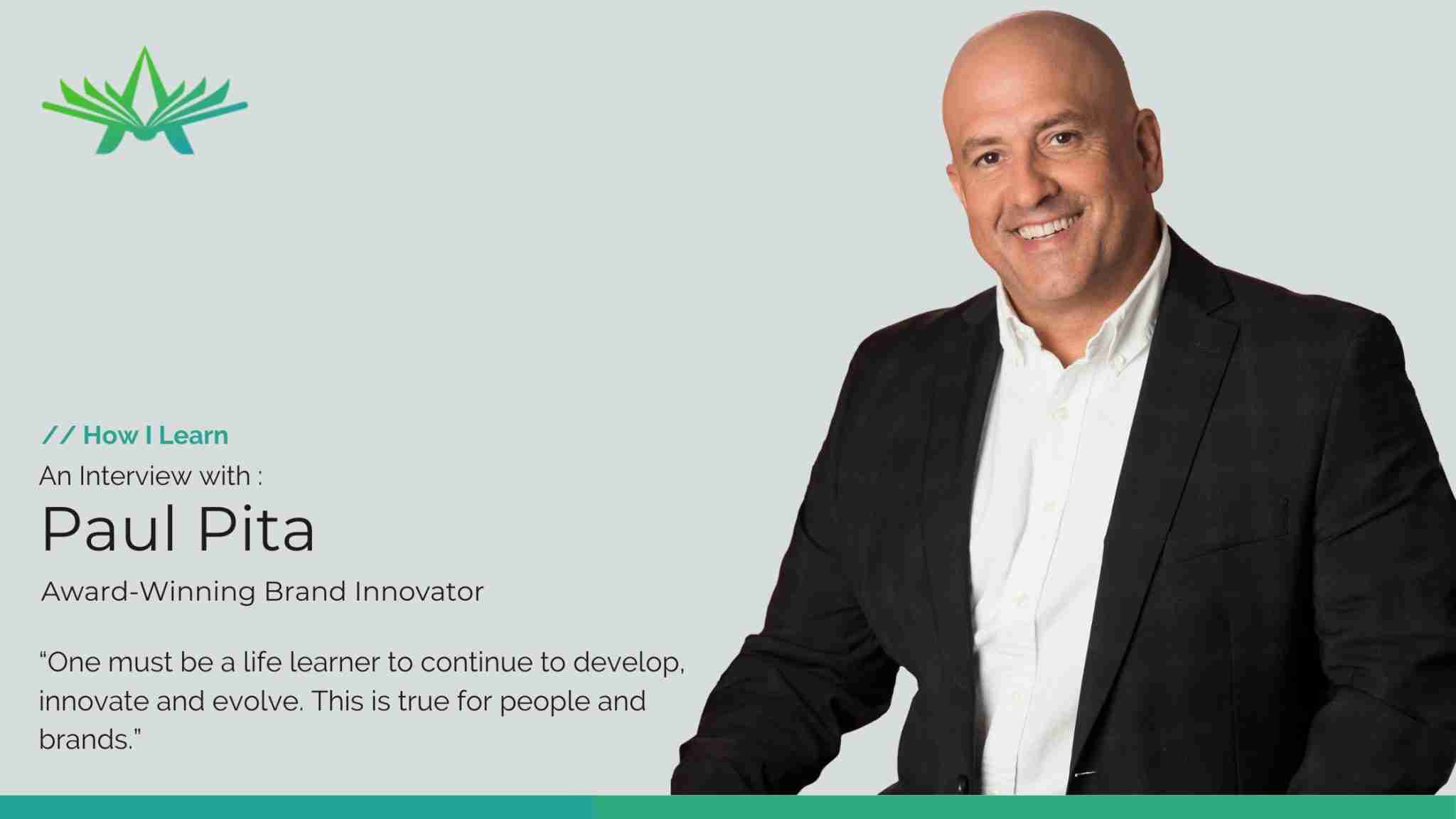
Paul Pita is an award-winning brand strategist, seasoned entrepreneur, and business leader with more than two decades of experience owning and leading full service multimillion dollar marketing firms. He founded “The Pita Group”, a top Hispanic owned advertising agency which later merged with Rebel Interactive. As part of a key leadership team, Paul helped grow the company’s revenue exponentially to $20 Million helping it earn recognition as a 2020 Inc Magazine fastest-growing company. Today, Paul uses his deep branding expertise, unique strategic approach to marketing, and ability to bring people together to solve challenges and create positive change for companies internally and externally (https://paulpita.com/).
When starting out with a new client, Paul’s first priority is to establish a clear understanding of the brand and business as it stands today. Why does the business exist? What do they stand for and why? How do they deliver on the promise of their brand/organization beyond simply their pitch? This is where the learning experience portion of Paul’s approach begins. This initial step is not just meant to give Paul a better understanding of the organizations he works with, it’s also meant to give employees a chance to explore their subjective answers to these questions, how they compare to the answers of their co-workers, and what the internal understanding of the company’s brand currently is. He does this in a variety of ways. Paul begins by sending out a pre-workshop questionnaire, intended to reveal where the company is in its understanding of being believable, compelling, relevant, and different. These pre-workshop responses help Paul organize future meetings and workshop questions around his ultimate goal of establishing clarity to create positive outcomes across the organization. In his words, “It isn’t my job to reiterate where they are today, but to what their brand could stand for for tomorrow and be sustainable for the future”. This all begins with building a shared sense of understanding in his early workshops from which the final brand strategy will take root.
This process usually takes multiple meetings and involves a variety of techniques and activities. One of the techniques used by Paul begins by handing out a sheet of paper to everyone in a meeting and asking them to draw a symbol of what their company represents. Oftentimes, he’ll find that in a group of 10 people, he’ll receive 10 distinct symbols all with unique features based on different lines of thinking. The point of this exercise is to show not only that people, in general, tend to interpret brands differently, but also that people within organizations often interpret their own brands in different ways as well. These insights and differing perspectives are extremely important to highlight and understand in the branding process. Paul works collaboratively with leadership, company experts, and various teams to seek out these insights which he can condense into the beginning of the brand’s overall strategy. The end goal is to arrive at a shared story and purpose that all stakeholders can agree upon and feel passionately about. In Paul’s words:
“They have to buy into it. There’s a consensus that I have to create that this isn’t my messaging. This is what I’m getting from you. I’m organizing it in a way that is believable, compelling, relevant, and different. Does it work for you? Does this fit not only who you are authentically, but are you comfortable telling the story?…that interpretation of the brand strategy, that translation of how we’re positioning the story…the organization and leadership, sales team, and staff all have to feel comfortable with it.”
In short, Paul’s approach is centered around fostering a learning process (both for himself and the organizations he works with) that facilitates a true collaborative understanding of the brand, the business, and the direction they hope to go in. Through various workshops, meetings, activities, and a multitude of questions, Paul works alongside various teams within organizations to uncover helpful insights and information which he uses to formulate and draft a “brand playbook”. This “brand playbook” is a reflection of the work done by Paul and the organization to arrive at a place where they can say “…this is who we are and this is why it matters.”
Paul harnesses the power of learning and collaboration to solve challenges within organizations and create truly game-changing brands for his clients. His commitment to strategic collaboration, learning, alignment, and execution is in large part why Paul is an award-winning brand strategist today. Ahura Ai is delighted to be able to highlight such an accomplished individual like Paul and how learning, understanding, and collaboration play a unique role in his approach. What do you think about Paul’s approach to branding? Have you seen or used any similar methods? What role does learning and/or collaboration play in your approach? Let us know in the comments or in a #HowILearn post of your own and tag us @AhuraAi so we can be sure to engage with you. For more information on Ahura Ai and how we are molding the workforce into agile top performers check out our website at ahuraai.com.
Author: Alex Murray, Operations and Client Success Intern, UC Berkeley ‘23